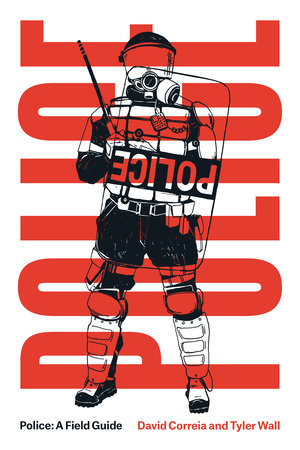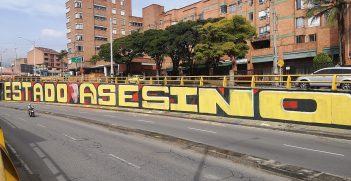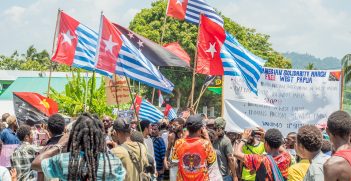Book Review: Police: A Field Guide

Despite increasing awareness of the need for reform, police abuse and violence remain a major problem in the United States. In Police: A Field Guide, David Correia and Tyler Wall provide a compelling explanation as to why this is the case.
This clear and timely book explains how police behaviour represents an extension of an oppressive social system through a close examination of policing terminology, what they call “Copspeak.” As they demonstrate, police reform is meant to produce changes, or perceived changes, that ensure the preservation of the status quo. Counterintuitively, and in contrast to the common understanding of police reform, they argue that police reform processes are meant to improve people’s perceptions of police rather than encourage any meaningful changes. Within this project, Copspeak is used to normalise and legitimise violent police behaviour through expressions such as “pacification,” “protect and serve,” and “professional.” Police were designed to protect people from crime and violence, and to ensure order and peace. As the authors put it: “who doesn’t want that?” The authors argue that this is the very reason why police reform does not work to reduce violence; it is not meant to do so. In a style that is direct and honest, the book offers numerous insights that are appealing to general audiences and researchers alike.
The book is organised in seven chapters. The introduction lays out the main argument and structure of the book, while the five subsequent chapters are designed to present the authors’ interpretation of the worldview of police, focusing on technologies of repression, how police are organised, and the values they embrace. Within each of the five sections, the book uses descriptions of terminology commonly used by cops in policing circles or by public opinion to discuss policing issues, providing an alternative account. For example, they define “police militarization” as “the introduction of military weaponry, technology, language and aesthetics into the realm of domestic policing,” subsequently reminding the reader that the police and the military have historically had more commonalities than differences, that police were modelled after the military, and that “militarization” is, in fact, a type of reform. In the concluding section, the authors reflect upon what “a world beyond police” could look like.
One of the book’s central contributions, in addition to the discussion of copspeak, is to provide relevant context for the concepts it presents. For example, in the discussion of lynching, the authors define the term as “to put to death, often by hanging, without a trial,” adding that “lynching has served as a central tactic of racial control (…) as a way to suppress black political power.” In doing so, the book also presents the reader with a clear account of the construction and evolution of race-based oppression in the United States, where police are “the blunt instrument” of policy implementation.
An innovative aspect of the book is the style in which they present their argument and invite the reader to encounter copspeak. As the authors explain, readers can choose to do so by reading cover-to-cover, or proceeding non-linearly by beginning with a section or specific word that interests them and following the references to terminology throughout the book. This “choose your own adventure” approach creates multiple pathways for reading the same book that can lead to various different insights, depending on the reader’s interests.
The book offers a specific perspective looking at the institution of police, its practices, the way it socialises police officers, and its power over society more broadly. This is a virtue. Because it zooms in on a concrete issue, it does not overreach. However, it is also a limitation: even though the book discusses how police are embedded in complex societal dynamics, some aspects are inevitably oversimplified. Arguably, violent policing results from a convergence of preferences for repressive practices from multiple sources in addition to the convoluted discourse of policing. Even though the book makes reference to systemic forms of oppression, at times it falls prey to the same Manichean “us versus them” logic that it is trying to reject.
The police are embedded in a broader system, not only the justice system, but also a societal system that sustains police behaviour. The book presents this societal system as one where police and “the economically secure, mostly white communities” are pitted against “black, hispanic, indigenous, poor, and immigrant communities.” The reality is more complex; academic research has shown that many times the same populations who suffer police violence and abuse also support police, for a variety of multifaceted reasons. This is by no means an excuse for police violence. But it points out that societal problems are much more complicated than the “us versus them” logic permits. Correia and Wall’s perspective also treats “the police” as a unitary institution, where everyone seems to follow the same patterns of behaviour. Research has also demonstrated that policing organisations are more diverse and complex than one might think. Where do the officers who do not toe the line fit? Could they be allies when it comes to pushing for an entire transformation of society?
The book is very effective in its diagnosis of what is wrong with policing, and persuasive in stating that it does not have to be this way. But it is less convincing in showing readers what other possibilities exist. For example, the book states that it is not the case that the only way to maintain peace is through policing, but it could spend more time defining what peace looks like. It could also engage with the discussion of what a society without police might look like. If the argument is that societies are capable of self-regulation, what exactly does that look like? How might one prevent other actors – be it “the neighbourhood watch on whatsapp,” vigilante groups or criminal gangs – from taking it upon themselves to adjudicate between “good and bad guys.” Finally, the authors could point to alternative mechanisms of justice that currently exist and are implemented, which could be a starting point for reimagining society. Such is the case of restorative justice practices, victim-offender mediation programs, and alternative forms of punishment. To be fair, none of these are the main goal of the book, but if one of the goals is to show that alternatives to the police are possible, readers might expect more from the authors than simply stating that “the only way to improve the police is to abolish it.”
Police: A Field Guide should be read by anyone who is concerned about violent policing and who want to come away with a deeper understanding of its causes and consequences from a systemic perspective. For activists, the book charts a path forward as it provides tools to challenge and deconstruct existing assumptions about police and policing. For scholars, the book presents a fascinating research agenda that opens up multiple questions about why policing works in the way that it does, and what alternatives there might be to it.
This is a review of David Correia and Tyler Wall, Police: A Field Guide (Verso, 2022). ISBN: 9781839765872
Dr Lucía Tiscornia is an Assistant Professor in the School of Politics and International Relations and a Fellow with the Geary Institute for Public Policy at University College Dublin. She is also a Research Affiliate with the Violence and Transitional Justice Lab at the University of Notre Dame.
This article is published under a Creative Commons License and may be republished with attribution.





